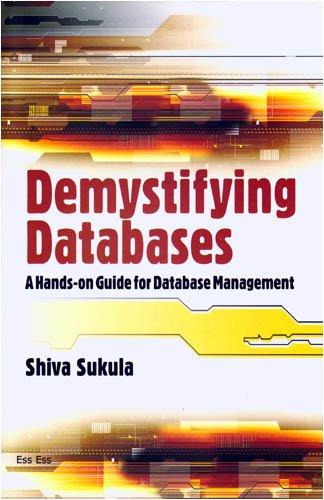PLEASE ANSWER THIS CASE STUDY BELOW



Based on the above case study and the business and IT problems stated above, please answer the following questions:


Lego has long been an industry leader in children's toys with its simple, yet unique building blockstyle products. The privately held company was founded in 1932 by a Danish carpenter whose family still owns Lego today. But by 2004 , the company found itself close to extinction, losing $1 million a day. A new CEO was brought in, and five years later, sales were strong, profits were up, and navsayers who felt the new strategy was going to fail were proved wrong. With the advent of high-tech forms of entertainment such as the iPod and PlasStation, Lego found itself more antique than cutting edge in the toy world. When new CEO Jorgen Vig Knudstorp, a father and former McKinsey consultant, took over, the company struggled with poor performance, missed deadlines, long development times, and poor delivery record. The most popular toys would run out and Lego was unable to ship enough products or manage production of its more complicated sets. Retail stores were frustrated, and that translated into reduced shelf space and ultimately to business losses. Knudstorp changed all of that. He reached out to top retailers, cut costs, and added missing links to the supply chain. For example, prior to the new strategy; 90% of the components were used in just one design. Designers were encouraged to reuse components in their new products, which resulted in a reduction from about 13,000 different Lego components to 7,000 . Since each component's mold could cost up to 50,000 euros on average to create, this reduction saved significant expense. Legowas known for their traditional blocks and components that would allow children to build just about anything their imagination could create. The new strategy broadened the products, targeting new customer segments. Lego managers created products based on themes of popular movies such as Star Ilars and Indiana James. Thes mosed inte video ganes, which featured animated Leqgo characters sometimes based on llollwwoxd movies. They created a product strateg for adults and engaged the communities who had alreads set up thousands of wehsites and hlogs featuring Lego creations. Thes embraced the comunnity who thought of Lego as a wall to create art. rather than simpls a building tos. Ind they designed a line of Legos aimed at girls. since the majority of their products had primarily targeted boss. The culture of Lego changed to one where nomperformance was unaceeptable. The companys past showed a tendency to focus on innosition and creativity often at the exense of profits. But that chunged. "Knudstorp made it clear that ressults, not simpls fecling good abont making the best tors. would be essential if Lego was to suceeed. . Its business may still be fin and games but working here isnt." descriles the eurrent eulture at legen. Some of the most drastie changes eame from within lego's orgatniational structure After racking up massive losees in 2004 . Lego switched its emploves pay structure offering incentives for appropriate product innovation and siles. Key Performance Indicators encouraged product innoration that catalyed sales while decreasing costs. Deselopment time dropped by 50% and some manuficturing and distribution functions were noved to less expensive locations. but the focus on quality remained. The creation of reusable parts allesiated some of the strain on Lego's supply chain, which in turn helped its bottom line. Lego also expanded into the sirtual workd, estending into video gaming and sirtualinteraction gimes on the Internet. Thinking outside their presions product concepts cut costs while encouraging real-time feedhack from customers across a global market. Additionally, Lego created brand ambassadors who organized conventions across the world to discuss product innovation and building communities of fellow customers. With increased resenue, Lego managers considered entering the mosie-making husiness - a risky proposition for a toy company, Howeser, Lego's success with Hollywood-type action figures fineled its interest in a movie-making endeavor. The growth put strains on the information systems supporting the business. Order management and fulfillment were particularly affected, resulting in the inability to meet customer demands. Emplovee management systems were stretched as new emplovees were added to support the growth and additional locations. Product design and development, especially the sirtual and sideo games, required new technology, too. To solve some of these problems, Lego managers used the same approach they used for their blocks. They created a modularized and standardized architecture for their information systems, making it possible to expand more quickly and add eapacity and functionality as it was needed. They implemented an integrated enterprise system that gave them new applications for human capital management, operations support, product life cycle management, and data management. The new systems and services, purchased from vendors such as SAP and IBM. simplified the IT architecture and the management processes needed to oversee the IS. One manager at Lego summed it up nicely: "The toy world moves onwards constantly, and Lego needs to re-invent itself continuously. Significant corporate re-shaping introduced new energy to the company. "He went on to say that simplifing Lego's IT systems and implementing an efficient product development process that was able to maintain quality and cost favorably positioned Lego to respond to the fast changing pace of the toy industry: 1. Create Business Objectives. 2. Create business (including product, distribution, HR...) strategies 3. Create IS strategies. 4. Create a matrix between Problems and Objectives, 5. Create a matrix between Problems and Business Strategies. 6. Create a matrix between business strategies and IS strategies. 7. Create a matrix between objectives and business strategies











